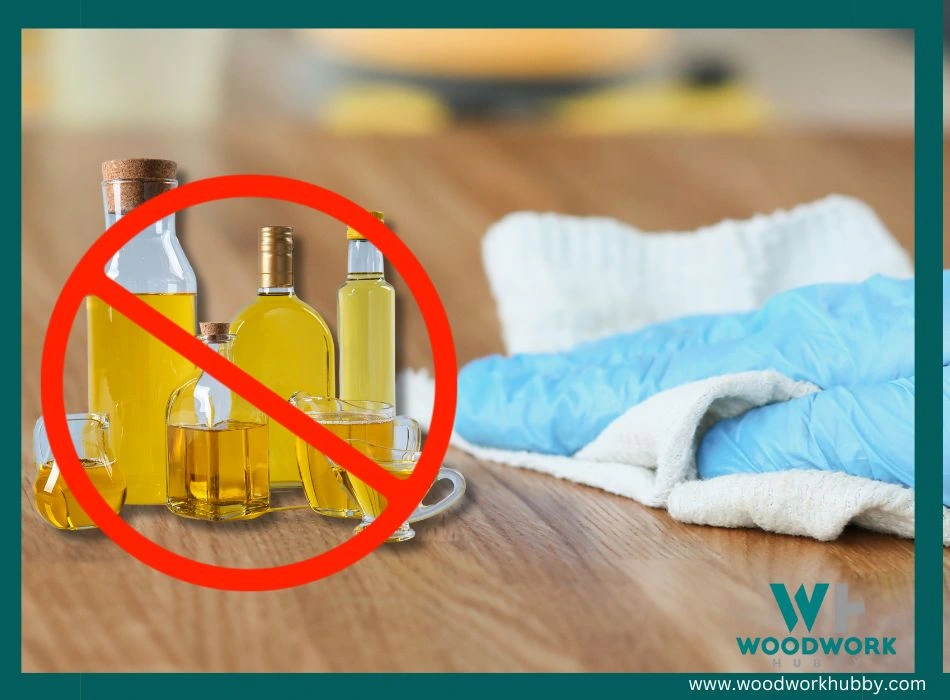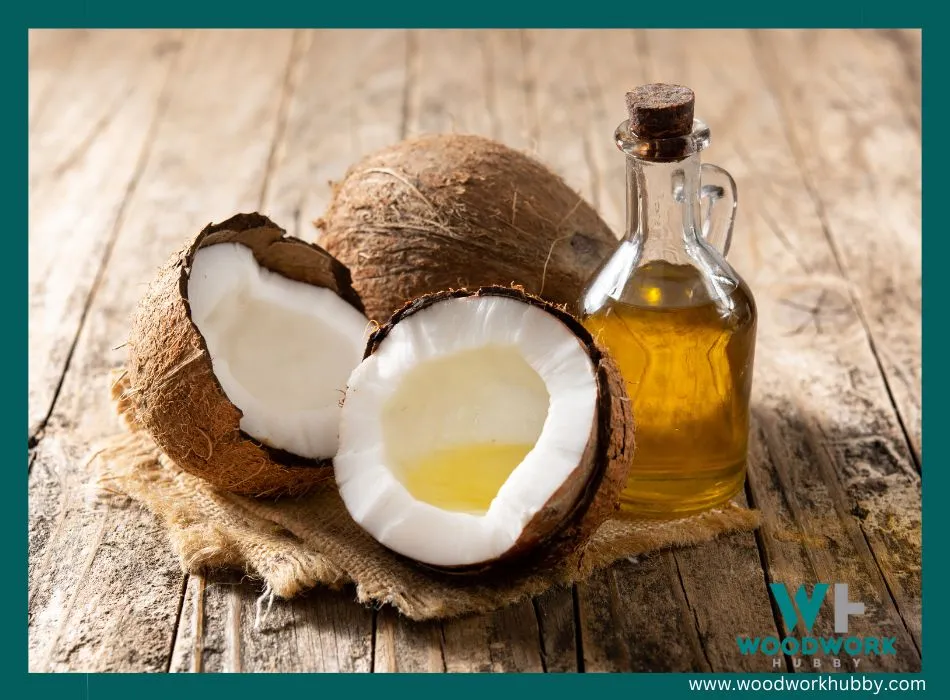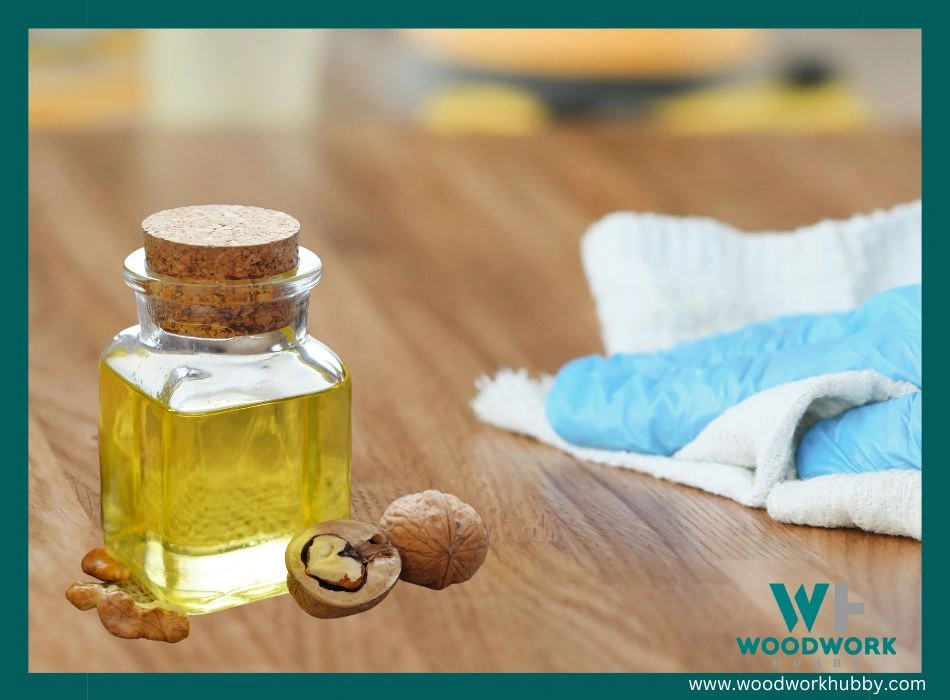I don’t like to rely too much on a single tool or resource. Over the past few months, I found myself being too dependent on Linseed oil. Last week, I tried multiple alternatives and possible choices that could replace linseed oil. You’ll be interested in knowing the surprising results I found.
Pure tung oil is the best alternative for linseed oil, with mineral oil and walnut oil coming pretty close. Cooking oils like vegetable oil were the worst as they got rancid and left an odor alongside a sticky finish.
In this article, you will learn more about each experiment and what I found about every single option. You will also learn about other uses of these oils that don’t compare to linseed oil.
But before we explore those, let’s go over the best feature of each oil.
| Oil | Best Use | Price |
|---|---|---|
| Olive Oil | Make finished wood look better. | Check the Price |
| Cooking Oil | No practical use for wood. | Check the Price |
| Vegetable Oil | No practical use for wood. | Check the Price |
| Coconut Oil | Moisturize finished wood with this. | Check the Price |
| Walnut Oil | Use this to improve the finish and the appearance of the wood. | Check the Price |
| Mineral Oil | Use this for a minimally glossy finish. | Check the Price |
| Pure Tung Oil | Use this in place of linseed oil to make wood water-resistant and scratch-proof. | Check the Price |

What Does Linseed Oil Do?
Throughout this post, I’ll cover different linseed oil alternatives, which is why it is essential to pinpoint the exact functions and features we are looking for.
Here are the key reasons why we use linseed oil when woodworking:
- Improved water resistance – As you may have heard, water and oil don’t mix. When linseed oil coats wood, it helps improve its water resistance.
- Reduces rot and decay – Another important function of linseed oil is that it prevents fungus and other microbes from decomposing wood. It does so by cutting their access to wood and the wood’s access to humidity.
- It strengthens wood – While linseed oil doesn’t turn softwood into hardwood, it can raise the wood’s durability to a non-nominal extent.
- Gives a smooth finish – Linseed oil leaves a wood surface relatively smooth if poured in enough quantity.
- Provides a glossy look – Especially when fresh, linseed oil can give the wood an attractive appearance by making it look almost wet.
Video comparing Oil finishes
Can I Use Vegetable Oil Instead of Linseed Oil?
You cannot use vegetable oil instead of linseed oil on wood because it doesn’t harden the same way. Instead of seeping deep into the wood and polymerizing to harden alongside the surface, vegetable oil forms a thick layer over a wooden surface and can be instantly wiped off.
I had expected as much when I used vegetable oil as an experimental replacement when researching this post. What I had not anticipated was that it would stink so bad. The oil starts to smell like a stale veggie stew in as few as three days.
Can I Use Olive Oil Instead of Linseed Oil?
You can use olive oil instead of linseed oil, but it doesn’t have the same effect. Where linseed oil improves the durability and the water-resistance of wood, olive oil can bring out the natural shine of the wood. To serve its purpose, it has to be the final layer, usually applied after finishing.
Unlike vegetable oil, there is a reason for olive oil to be used on wood. However, it doesn’t check enough boxes that linseed oil does to be considered a decent replacement.
Let’s look at what this oil can and cannot do:
| Feature of Linseed Oil | Does Olive Oil have this feature? |
|---|---|
| Water resistance | The oil itself resists water but not when applied to wood. |
| Decay Reduction | No |
| Wood Strengthening | Yes, to a lower extent than linseed oil |
| Finish Improvement | No |
| Appearance improvement | Yes, it refreshes the last semi-permanent finish applied to wood. |
Verdict: If you have a pre-finished piece of wood that you need to refresh, you can use Olive oil as it makes the wood look alive.
It doesn’t do much in the way of rot reduction or making wood water-resistant, which is why it is best used on wood that doesn’t need to be waterproofed. I have started using olive oil as a refresher on pieces previously coated in linseed oil but have not used it as a replacement since the initial experiment.
Can I Use Cooking Oil As Linseed?
You cannot use cooking oil like linseed oil in woodworking because cooking oil goes rancid and doesn’t strengthen the wood or improve its water resistance. Instead of finishing the wood, it simply forms a scrapable layer over it.

I had to throw away the panel I tried this on simply because of the stickiness of the finish. Even when the odor of the rancid oil had disappeared (or my nose got used to it), I could not get past its stickiness.
Unlike olive oil, cooking oil cannot be used on finished wood or any type of wood for any positive outcome.
Can I Use Coconut Oil Instead of Linseed Oil for Finishing?
You can use coconut oil instead of linseed oil as a wood finish but to a different effect. Coconut oil has a desirable effect on wood and can be used with or without linseed oil.

When you compare the features of the two oils, though, you can see why linseed oil remains the better option.
| Feature of Linseed Oil | Does Coconut Oil have this feature? |
|---|---|
| Water resistance | No. It safely moisturizes the wood, though. |
| Decay Reduction | Yes, for up to two weeks |
| Wood Strengthening | No |
| Finish Improvement | No |
| Appearance improvement | Yes, it makes the wood look shinier |
Verdict: In other words, the effect of coconut oil on wood is that it moisturizes the wood without water damage, reduces decay for a very short time, and leaves the wood looking fresh.
With that in mind, coconut oil is a good refresher for old wood products that don’t need waterproofing but might be due for polishing.
Linseed oil and Tru oil and Tung Oil put to the test
Can I Use Coconut Oil Instead of Linseed Oil for Painting?
Since coconut oil’s main function is to improve the appearance of wood, it is not useful in any context where it gets painted over. The table below covers a few possible contexts.
| Painting-related use context | Can you use coconut oil for painting? |
|---|---|
| As a prime / before applying paint | No. Coconut oil is not a good enough primer. |
| As a diluent for oil paint | It is impractical to think of oil paint with coconut oil. As a polish for the painted woodYou can use coconut oil to make a piece of painted wood look fresh. |
The Best Linseed Oil Alternatives for Wood
After trying out the most easily available potential alternatives, I set criteria for myself that would get me closer to the best alternatives for linseed oil. From Castor oil to Indian Amla, I tried everything that wouldn’t harden with a pungent odor, and the following three came the closest to linseed oil:
Walnut Oil
Walnut Oil is a very good finish for wood as it improves wood, giving it a semi-permanent darker finish. It strengthens wood to an extent but fails to make it waterproof, making it ideal for sealed wood. It is ideal for wooden utensils and other surfaces that can come in contact with food because it is 100% natural and food-safe.
How walnut oil compares to linseed oil
- Water-resistance – Walnut oil is not water-resistant
- Decay reduction – Walnut oil resists rot just like linseed oil
- Wood Strengthening – Linseed oil is better at strengthening wood.
- Finish improvement – Walnut oil improves the feel of wood
- Appearance improvement – Walnut oil gives the wood a dark appearance compared to linseed oil’s glossy finish.

Pure Tung Oil
This is my number one linseed oil replacement because it comes the closest in terms of non-toxicity, waterproofing, and rot resistance. Please note that there is an emphasis on “pure” because standard tung oil might include items that cannot be safely consumed.
Here is how pure tung oil compares to linseed oil:
- Water-resistance – Pure tung oil and linseed oil are virtually equal in their ability to waterproof wood to an extent.
- Decay reduction – Both linseed oil and pure tung oil can reduce decay and resist rot by creating a film over wood.
- Wood Strengthening – Pure tung oil can make wood considerably stronger
- Finish improvement – Tung oil needs multiple coats to feel different, but it does improve the overall wood finish.
- Appearance improvement – Tung oil has a varnish-like appearance that is slightly glossier than linseed oil.
Mineral Oil
I like mineral oil as a replacement because it has a similar consistency to linseed oil, allowing it to seep into the wood and strengthen it at a deep enough level. The oil creates a polish-like appearance that is more tint-neutral than linseed oil (which has a yellowish tint).
Here is how mineral oil compares to linseed oil:
- Water-resistance – Mineral oil is not as water-resistant as linseed or tung oil.
- Decay reduction – Mineral oil can protect the wood from rapid rotting.
- Wood Strengthening – By keeping wood from expanding and contracting too easily, mineral oil strengthens wood.
- Finish improvement – Mineral oil has a less apparent effect on the finish of the wood.
- Appearance improvement – You can barely see the effect of mineral oil on wood, which is ideal if you’re a minimalist woodworker.
Final Thoughts – What Can I Use If I Don’t Have Linseed Oil?
Aside from the cooking oil and canola oil, every single oil I tested improved the wood’s appearance or feel. Pure tung oil remains the closest alternative to linseed oil, while mineral oil remains a good second place holder.
See My Other Articles On Linseed Oil
Will glue stick to linseed Oil?
Will Epoxy Stick To Linseed Oil?
Will Sticky Linseed Oil Eventually Dry?
What Can I Use If I Don’t Have Linseed Oil?










